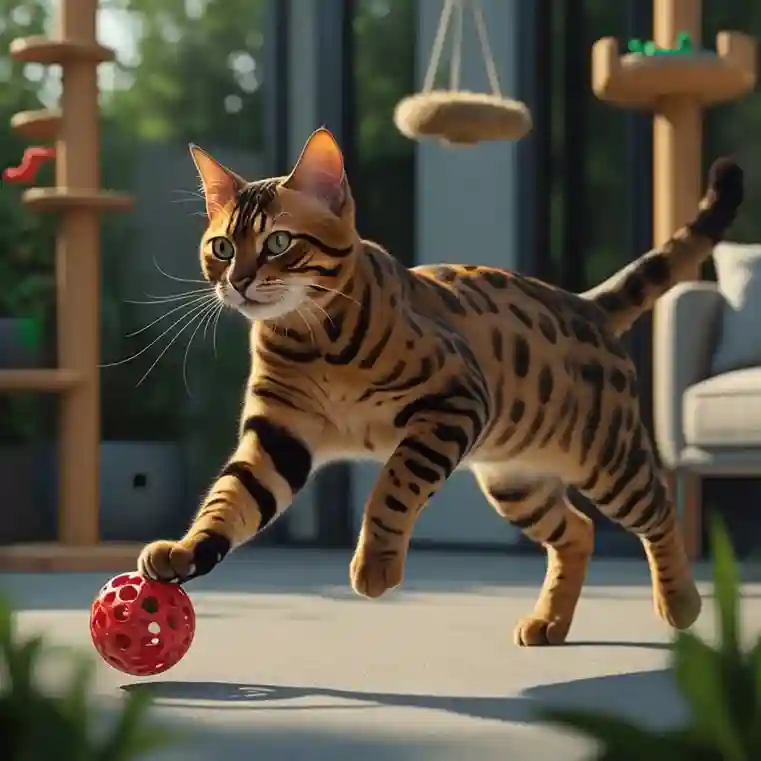If you’ve ever heard your cat let out a sharp, snake-like hiss, you might have wondered, “Why do cats hiss?” This distinctive sound can be startling, especially if your normally cuddly feline suddenly transforms into a hissing ball of fur. But don’t worry—hissing is a natural part of a cat’s communication toolbox. It’s their way of expressing discomfort, fear, or even asserting dominance.
In this in-depth guide, we’ll unravel the mystery behind why cats hiss, explore the science of feline behavior, and share practical tips for responding to your cat’s hissing episodes. Whether you’re a seasoned cat parent or a new pet owner, understanding this vocalization will help you build a stronger bond with your feline friend.
Let’s dive into the fascinating world of feline communication and decode what your cat is really saying when they hiss.
What Is a Cat’s Hiss?
A cat’s hiss is a sharp, forceful exhalation of air through the mouth, often accompanied by an arched back, puffed-up fur, and bared teeth. It sounds remarkably similar to the hiss of a snake, which isn’t a coincidence—cats may have evolved this sound to mimic a predator’s warning. Hissing is a universal feline behavior, observed in domestic cats, wild cats, and even big cats like lions and tigers (though their “hiss” might sound more like a roar!).
Hissing is primarily a defensive vocalization. It’s your cat’s way of saying, “Back off!” or “I’m not comfortable with this.” Unlike meowing, which is often directed at humans, hissing is a more primal sound used to communicate with other animals, people, or even objects that feel threatening.
But what exactly triggers this dramatic reaction? Let’s explore the top reasons why cats hiss.
Why Do Cats Hiss? 7 Common Reasons
Cats hiss for a variety of reasons, and understanding the context is key to interpreting their behavior. Here are the seven most common reasons your cat might be hissing:
1. Fear or Anxiety
When a cat feels threatened or scared, hissing is their go-to defense mechanism. This could happen in response to a loud noise, an unfamiliar person, or a new environment. For example, a trip to the vet or the arrival of a new pet might trigger a fear-based hiss.
Example Scenario: Your cat hides under the couch when a delivery person rings the doorbell, hissing at the unfamiliar sound.
2. Territorial Instincts
Cats are territorial creatures, and they don’t take kindly to perceived invasions of their space. If another pet or even a human encroaches on their favorite spot, a hiss might be their way of saying, “This is my turf!”
Example Scenario: A new kitten tries to share your cat’s favorite perch, prompting a hiss to establish boundaries.
3. Pain or Discomfort
A cat in pain may hiss to ward off anyone who gets too close. This is especially common if they’re injured, sick, or experiencing chronic conditions like arthritis. If your cat’s hissing is sudden or accompanied by other signs like limping or hiding, a vet visit is in order.
Example Scenario: Your cat hisses when you try to pet their sore paw after a minor injury.
4. Overstimulation
Petting your cat for too long or in a way they don’t enjoy can lead to overstimulation. When they’ve had enough, they might hiss to signal that they need a break.
Example Scenario: You’re scratching your cat’s belly, and after a few minutes, they hiss to say, “That’s enough!”
5. Redirected Aggression
Sometimes, a cat hisses at you or another pet because they’re upset about something else entirely. For instance, if they see a stray cat outside the window but can’t reach it, they might redirect their frustration by hissing at a nearby target.
Example Scenario: Your cat spots a bird outside and hisses at you when you walk by, unable to vent their excitement.
6. Maternal Instincts
Mother cats are fiercely protective of their kittens. If they feel their litter is threatened, they’ll hiss to warn off potential dangers, whether it’s another pet or a curious human.
Example Scenario: A mama cat hisses when you get too close to her newborn kittens.
7. Playful or Assertive Behavior
In some cases, hissing can be part of play or a way to assert dominance, especially in multi-cat households. Young cats might hiss during roughhousing to test boundaries or establish their place in the hierarchy.
Example Scenario: Two kittens hiss at each other during a playful wrestling match, setting ground rules for their game.
The Science Behind Hissing: A Feline Survival Tool
Hissing isn’t just a random noise—it’s a carefully evolved survival mechanism. Cats hiss to avoid physical confrontations, which could lead to injury. By making themselves appear larger (puffed fur, arched back) and sounding intimidating, they hope to scare off threats without resorting to claws or teeth.
From an evolutionary perspective, hissing likely developed as a mimicry of snakes, which are universally feared by many animals. The sound, combined with a cat’s sharp teeth and intense stare, creates a formidable warning signal.
Interestingly, hissing is involuntary in many cases. When a cat feels threatened, their autonomic nervous system triggers the hiss as part of the fight-or-flight response. This explains why even the sweetest cats can hiss unexpectedly when startled.
Decoding Cat Body Language: What Hissing Tells You
Hissing doesn’t happen in isolation—it’s part of a broader set of body language cues. To fully understand why your cat is hissing, pay attention to these signs:
- Ears: Flattened or pinned back ears indicate fear or aggression.
- Tail: A swishing or puffed-up tail suggests agitation or defensiveness.
- Eyes: Wide, dilated pupils or a fixed stare can signal fear or readiness to act.
- Posture: An arched back and raised fur mean your cat is trying to look bigger and more intimidating.
By reading these cues, you can better assess the situation and respond appropriately. For example, a hissing cat with flattened ears and a tucked tail is likely scared, while one with a raised tail and forward-leaning posture might be asserting dominance.
How to Respond When Your Cat Hisses
Hearing your cat hiss can be unsettling, but how you react can make a big difference. Here are some dos and don’ts for handling a hissing cat:
Do:
- Give Them Space: If your cat is hissing, they’re asking for distance. Back off and let them calm down.
- Identify the Trigger: Look for what caused the hiss—a loud noise, another pet, or perhaps an uncomfortable touch. Removing or addressing the trigger can help.
- Stay Calm: Cats pick up on your energy. Stay relaxed to avoid escalating their stress.
- Consult a Vet: If hissing is frequent, sudden, or paired with other concerning behaviors (lethargy, appetite loss), a health issue might be the cause.
Don’t:
- Punish Them: Hissing is a natural behavior, and scolding your cat will only increase their stress.
- Force Interaction: Trying to pick up or pet a hissing cat could lead to scratches or bites.
- Ignore Chronic Hissing: Persistent hissing, especially in a previously calm cat, could indicate an underlying issue, such as pain or anxiety.
How to Prevent or Reduce Hissing
While hissing is normal, you can take steps to minimize it by creating a stress-free environment and understanding your cat’s needs. Here are some tips:
- Provide Safe Spaces: Cats need places to retreat when they feel overwhelmed. Set up cozy hiding spots, like cat trees or covered beds.
- Introduce Changes Gradually: New pets, people, or environments can trigger hissing. Introduce them slowly, using positive reinforcement like treats.
- Respect Their Boundaries: Learn your cat’s petting preferences and watch for signs of overstimulation, like tail flicking.
- Enrich Their Environment: Boredom can lead to stress and hissing. Offer toys, scratching posts, and interactive play to keep your cat engaged.
- Use Calming Aids: Pheromone diffusers or calming treats can help reduce anxiety in multi-pet households or during stressful events like moving.
When to Seek Professional Help
In most cases, hissing is a normal part of feline communication. However, if your cat’s hissing becomes excessive, aggressive, or is accompanied by other worrying behaviors, it’s time to seek help. Consider consulting:
- A Veterinarian: To rule out medical issues like pain, dental problems, or neurological conditions.
- A Feline Behaviorist: For chronic hissing or aggression, especially in multi-cat households or after a traumatic event.
Fun Facts About Cat Hissing
To lighten things up, here are some fun facts about cat hissing:
- Hissing Is Universal: From domestic tabbies to majestic lions, all felids hiss to communicate.
- Kittens Learn Early: Kittens as young as two weeks old can hiss, often mimicking their mother’s behavior.
- It’s Not Always Serious: Some cats hiss during play or as a quirky way to “talk” to their owners.
- Hissing Can Be Silent: In some cases, cats perform a “silent hiss,” opening their mouth and puffing air without making a sound.
Conclusion: Understanding Your Cat’s Hiss
Hissing might sound alarming, but it’s a natural and essential part of how cats communicate. Whether they’re feeling scared, territorial, or just a bit grumpy, hissing is their way of setting boundaries and staying safe. By learning to read your cat’s body language, respecting their needs, and creating a calm environment, you can reduce hissing and strengthen your bond with your feline friend.
Next time your cat lets out a hiss, take a step back, assess the situation, and respond with patience. After all, they’re just speaking their mind in the only way they know how!
Have a hissing cat story or a tip for calming a feisty feline? Share your thoughts in the comments below, and don’t forget to subscribe YouTube Channel for more cat care tips and insights!



